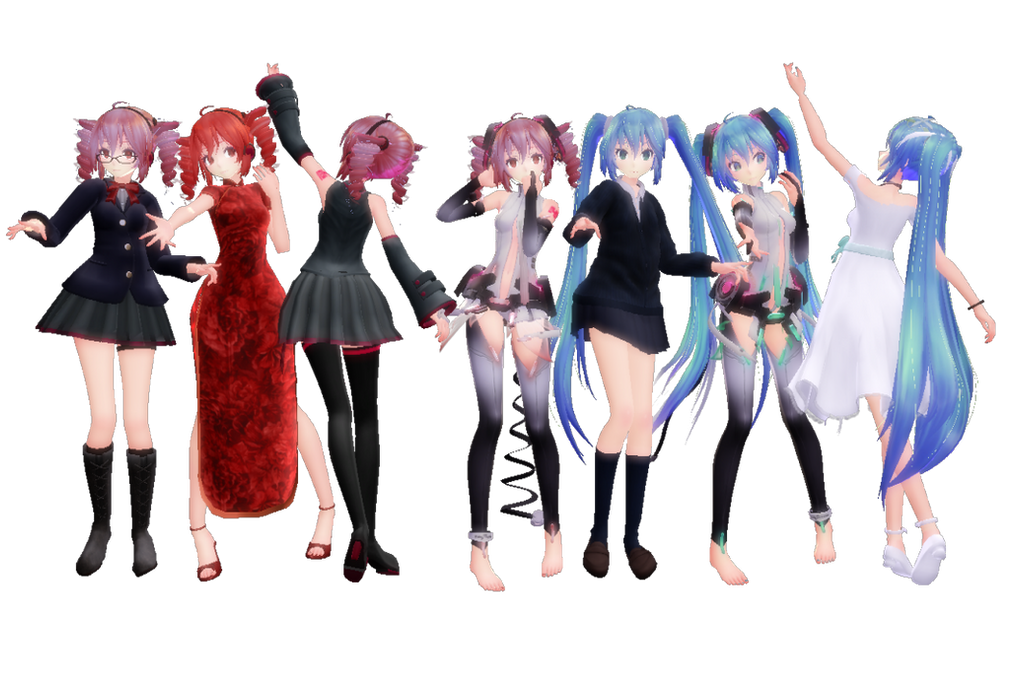Miku Miku Dance Version 7.39
My new walk test file is cleaner than my previous motion file. See it at. I started by sliding the model back to bit so the toes are on the ruled line. Registered. Then I moved in October 15 frames and advanced the Center and the Left Leg IK to the next line. Registered.I COPIED the Left Leg IK position. Then I went in October 15 frames and pasted que Left Leg IK date. Then I moved the Center and the Right Leg IK out to the next ruled line, registered, and COPIED the Right Leg IK position. Advanced another 15. And so on. This created a nice sliding / skating motion. Then I went back and added some foot and hip action.Go ahead and download this little file and play it for yourself! Get Google SketchUp and the '.X' plug-in for it.
9.31 / December 5, 2017; 2 months ago ( 2017-12-05) Development status Continuing Written in and later Available in English, Japanese, Chinese, Spanish, French Website MikuMikuDance, commonly abbreviated to MMD, is a animation program that lets users animate and create 3D animated movies, originally produced for the character. The MikuMikuDance program itself was programmed by Yu Higuchi (HiguchiM) and has gone through significant upgrades since its creation. Its production was made as part of the VOCALOID Promotion Video Project (VPVP). Contents • • • • Overview [ ] The software allows users to import 3D models into a virtual space that can be moved and animated accordingly. The positioning of the 3D figures can be easily altered, the facial expressions can be altered (as long as the model has morphs to use), and motion data can be applied to the model to make it move. Along with these functions for models, accessories, stages, and backgrounds can be added to create an environment, and effects such as lens flares and AutoLuminous (an effect that makes things glow and light up) can be applied as long as the MikuMikuEffect (MME) plugin is installed into the interface.
Sound and music can also be added to create music videos, short films, and fan-made stories. The motion data used to animate the characters and the pose data mainly used for making screenshots can be exported as.vmd (Vocaloid Motion Data) files and.vpd (Vocaloid Pose Data) files, respectively. The exported files can then be imported into other projects made with software that can use the file types. Program Serge Gainsbourg Best Of Rar there. This allows users to share the data with other users. The software also uses the. Users can also use Microsoft's for motion capturing.
Map shadowing, screenshot rendering in several picture file formats and full movie rendering in the.avi file format are also possible. With the exception of a few models, stages, motion data and accessories that come with the software upon download, all content, including the 3D models, is distributed by the users, meaning all rules and restrictions (or lack thereof) vary greatly from case to case. Pgp Software For Windows 7 there. Most models' rules may be found in its Readme file, which may be a.txt, pdf or a webpage file.

More Miku Miku Dance Version 7.39 videos.

The creator, HiguchiM, has stated he can make no promises regarding how other users' fan models can or cannot be used, and is exempt from all responsibility relating to this subject. [ ] Models created by other users are often available for public download. As MikuMikuDance is exclusively a posing and animation software, modelers use 3D modeling software, such as or, to create the model and UV map, while the majority of conversion to the MMD platform (such as facial morphs, bones and physical bodies) is done with a program made exclusively for MMD model conversion, PMD Editor or its successor PMX editor. The software itself comes with a small number of models of well-known Vocaloids and an invisible grid, to which particle effects can be attached to in MME, a stage, some accessories, and two samples of what MMD can do, in the form of.pmm files; the file type that MMD projects are saved as. The software was originally only released in Japanese; however an English version was released at a later date.



